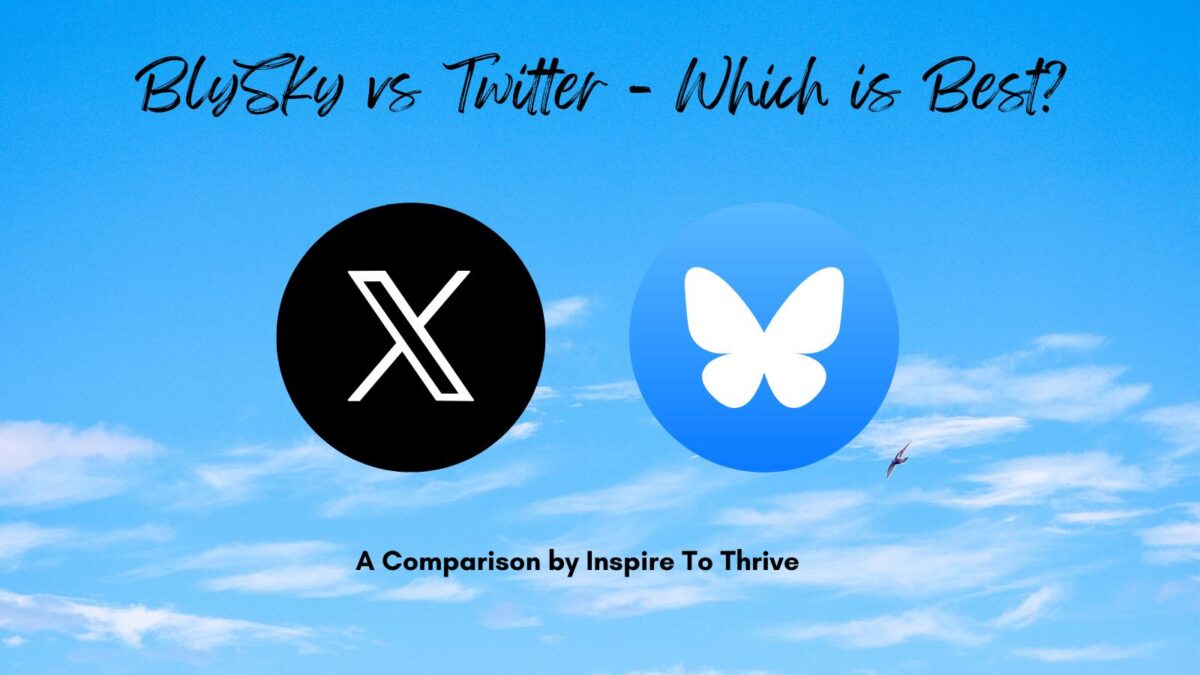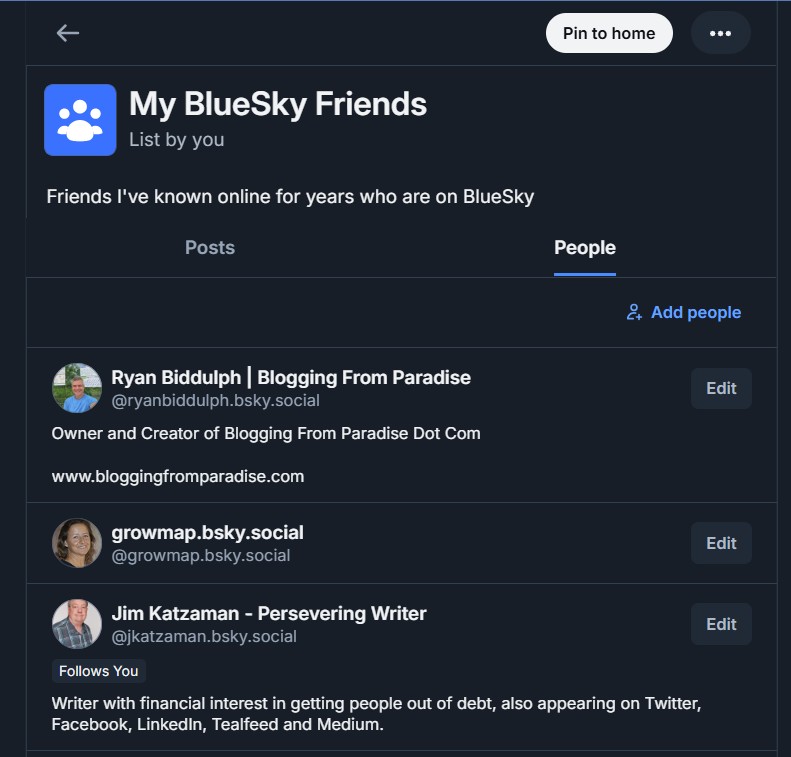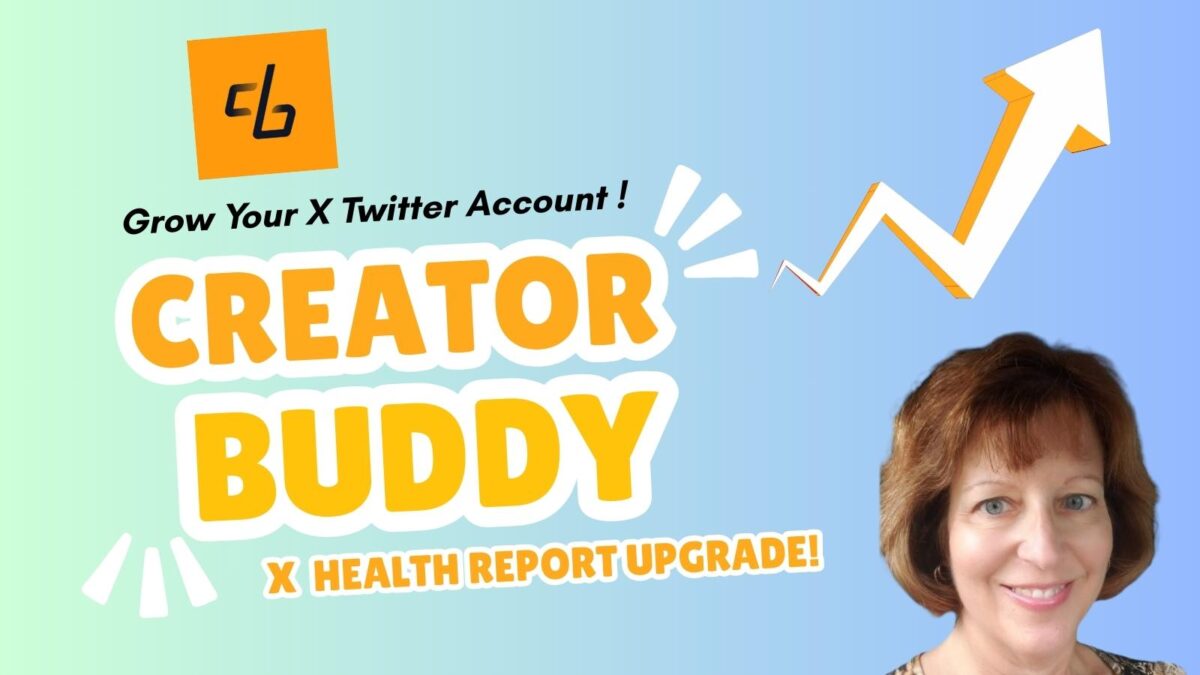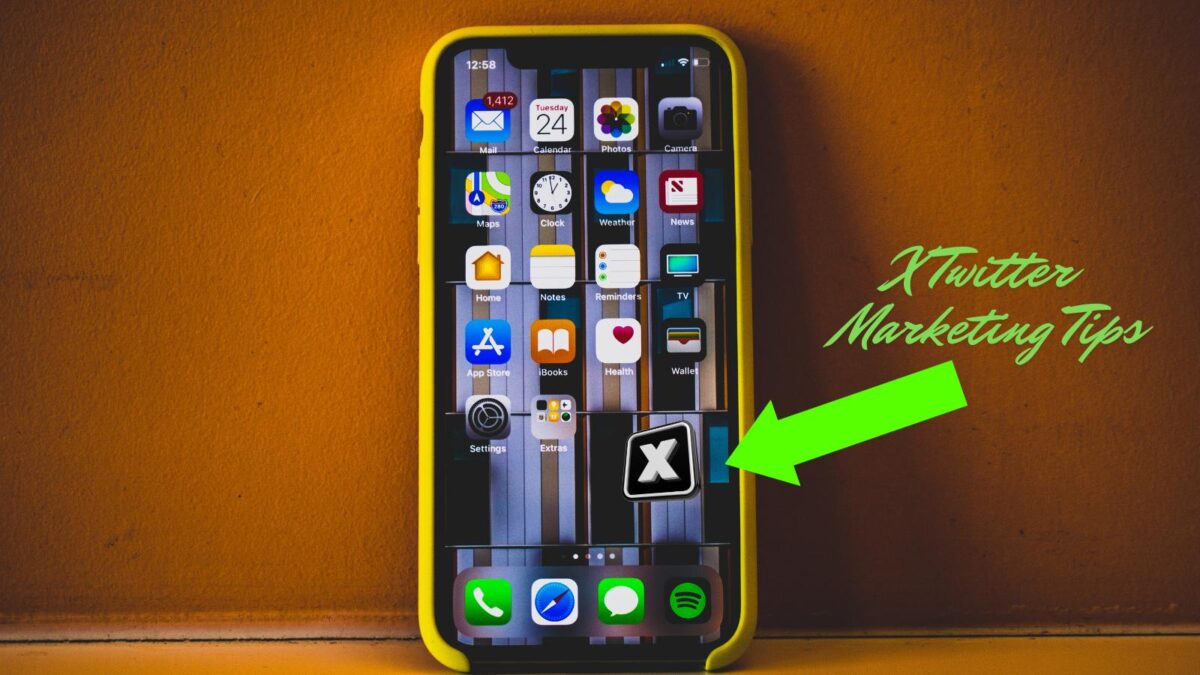BlueSky vs Twitter (now called X) and how they are alike but not. Both let you share short updates with your followers. While they seem similar on the surface, they work differently behind the scenes.
Bluesky sets itself apart by focusing on decentralization and open-source features. This means users have more say in how their content appears and is managed. You can even personalize your feed to fit your own interests, picking what you want to see instead of relying on a single algorithm.
X, on the other hand, remains a centralized platform. It manages most content decisions and controls how posts are shown. Customizing your experience is more limited compared to BlueSky.
If you’re looking for a platform where you can shape your own content feed and enjoy more control, BlueSky offers a new approach. For those who prefer a familiar setup with standard features, X still holds its ground as a go-to choice.
I decided to join BlueSky as Inspire To Thrive to see what was the differences and similarities as many marketing X Twitter chats moved over to BlueSky after the 2024 presidential election.
Table of Contents
Choosing Between Twitter and BlueSky
Choosing between BlueSky and Twitter (now called X) has become a hot topic for anyone wanting more from social media. As BlueSky grows in popularity, users are weighing its benefits against the features they’re used to on Twitter.
Both platforms offer ways to share updates, connect with others, and build a following, but their approaches and communities can feel very different.
This post breaks down the core similarities and unique differences in the BlueSky vs Twitter debate. You’ll get a clear look at how each platform works and what sets them apart, so you can decide which fits your style and goals online.
BlueSky User Count vs Twitter
Bluesky has quickly gained attention as a strong alternative to X (previously Twitter), with recent user numbers highlighting its growth. By May 2025, Bluesky reached about 36 million users worldwide—a jump of more than 15 million since November 2024.
This growth comes as many look for new platforms after changes at X under Elon Musk.

Meanwhile, X still holds a much larger audience, with about 588 million users in September 2024. However, this is down from 611 million earlier that year, with the biggest drops seen in the US and UK. While BlueSky’s total users make up just 6% of X’s, people on BlueSky are much more active.
Engagement on BlueSky is about 10 times higher for each follower, with 3.5 million daily active users in its main markets. X, despite its size, sees less activity as a share of its user base.
BlueSky’s fast rise hints at shifting trends in social media, as users look for better experiences and more community-focused spaces. This new platform stands out for its active audience and fresh approach, making it one to watch as it challenges long-standing leaders.
Core Features: Where BlueSky and Twitter Overlap
Both BlueSky and Twitter bring familiar social media basics to the table, making it easy for new users to feel comfortable switching between them. When you compare BlueSky vs Twitter, you find they share core functions that keep your social interactions smooth, fast, and simple.
Let’s look at where these two platforms meet, and how you can use their similarities to enjoy a steady online experience.
Account Setup and User Profiles
Starting on BlueSky or Twitter begins with a simple signup process. You create an account using your email, pick a username, and set a password. It feels much the same, whether you’re joining BlueSky or setting up a new Twitter (X) handle.
Once registered, you can build your profile by:
- Adding a profile photo: Shows your face or brand.
- Writing a bio: A short description about yourself or your business.
- Choosing a display name: Can match or differ from your username for flexibility.
- Linking a website: Directs followers to your business, blog, or another social platform.
Both platforms display this information at the top of your profile. If you’re used to Twitter’s dashboard, BlueSky’s profile layout will feel straightforward, helping you start connecting quickly.
Posting and Engagement (Likes, Replies, Reposts)
Once your profile is set up, posting updates and engaging with others works much the same way. You type a message—called a “post” on BlueSky and a “tweet” on Twitter (now called posts on X) —then share it with your followers. Both support:
- Text posts: Share thoughts, news, or questions.
- Images and links: Add visuals or share articles and resources.
- Hashtags: Organize your posts and join bigger conversations.
Engagement is just as familiar:
- Likes: Show approval or agreement with a tap of a heart or thumbs-up symbol.
- Replies: Respond directly beneath a post, starting conversations or debates.
- Reposts/Retweets: Share someone’s post with your audience, amplifying their message.
The posting experience keeps you in the flow—no need to relearn new tricks. If you’ve built habits on X Twitter, you’ll find them work just as well on BlueSky.
Timelines and Content Discovery
Your main feed on both platforms is called a timeline. Here you see posts from accounts you follow, mixed with recommended content, depending on your interests and settings.
Both BlueSky and Twitter keep this space central, making it your go-to spot for community updates and breaking news. Content discovery works on shared principles:
- Follow accounts: See their posts in your feed.
- Search function: Find users, posts, or hot topics with a simple search bar.
- Trending topics and hashtags: Stay on top of what’s popular (Twitter uses trending lists; BlueSky is refining its discovery tools).
- Explore pages: Browse recommended or popular posts beyond your follow list.
If you’re familiar with Twitter’s timelines and search abilities, you can dive right into BlueSky’s similar spaces. Both make it simple to find friends, influencers, or niche discussions.
Security and Privacy Basics
Both BlueSky and Twitter give you core privacy and security settings to keep your account safe and let you control your online experience. You’ll find essentials such as:
- Password protection: Change your password anytime.
- Two-factor authentication (2FA): Add an extra step for login security.
- Blocked and muted accounts: Silence or remove problematic users from your feed.
- Privacy settings: Set your account to public or private, deciding who can see or interact with your posts.
You can also manage data sharing and app permissions on both platforms, putting you in charge of your personal information.
BlueSky vs Twitter may bring different brands and vibes, but when it comes to the basics, both help you set up, share, and engage with confidence. This common ground means you won’t feel lost, even if you decide to try both or switch between them.
Key Differences: What Sets BlueSky Apart from Twitter
Although BlueSky and Twitter seem similar at first glance, several core differences shape your user experience. While both let you share, follow, and engage, BlueSky introduces unique concepts that break away from Twitter’s established model.
Here, you’ll get a clear look at the main ways BlueSky stands out, from its open protocol and moderation style to feed controls and app ecosystem.
Decentralization and Protocol: AT Protocol vs Proprietary Approach
The biggest technical divide between BlueSky and Twitter centers around how each is built and who controls the platform. Twitter is owned and operated by a single company.
All data, moderation, and updates flow through the company behind Twitter (now X). You join their network on their terms.
BlueSky uses something different: the AT Protocol. This open, decentralized protocol allows anyone to build compatible social apps. Your identity and content are not locked into one company’s servers. Instead, you can:
- Take your handle and social graph to another app if you want.
- Own your account in a way that’s portable, much like moving your email to a new provider.
- Trust that no single company can change the rules overnight.
This structure gives you more freedom and control. It’s like joining a postal network where you can switch post offices anytime, instead of being stuck with one.
On BlueSky, no single company decides every policy—app developers and users play a role in shaping the network. In contrast, Twitter keeps the entire operation under its own roof.
BlueSky vs Twitter X: Moderation Styles and Content Policies
How each platform handles unwanted content and user behavior shows another clear difference. On Twitter, moderation is managed by one central team.
Policies change based on company leadership and are enforced with a blend of automated systems and human staff.
- Bans, suspensions, and content warnings are all decided by Twitter itself.
- Policy changes may feel sudden and outside your influence.
- Appeals depend entirely on decisions from within the organization.
BlueSky uses a distributed model. Each app or service in the network can set its own rules and tools for moderation. If you don’t like the moderation on one app, you can try another connected to the network—without losing your account or followers.
You get more say through tools like:
- Choosing or blocking custom moderation services.
- Filtering what you see, not just what everyone sees.
- More transparency about why content is removed or accounts are flagged.
This setup means moderation feels less like a top-down command and more like community-led management. For users who value choice and transparency, BlueSky’s moderation system offers a breath of fresh air.
Feed Algorithms and Customization Controls
Feed design shapes what you see every time you log in. Twitter uses a proprietary algorithm to sort and highlight posts. The platform decides which tweets appear first, based on engagement, “relevance,” and paid promotion.
- You can switch to a chronological timeline, but algorithmic feeds often take priority.
- Recommendations and “For You” feeds can feel noisy or unpredictable.
- Ad placements and trending content are baked into the experience.
BlueSky gives you more tools to craft your feed. You’re not restricted to one algorithm or forced to see promoted posts. Instead, BlueSky users can:
- Subscribe to custom feeds that filter posts by keyword, community, or topic.
- Make your own with BlueSky lists like my favorite Twitter List feature.
- Curate your home timeline using open-source algorithms created by other users or developers.
- Avoid ads or recommended content if you want a quieter, more personal space.

Think of it as a playlist for your social feed. You pick the mix instead of letting someone else DJ. This customization pays off when you want control over what you see—and what you block out.
User Experience and App Ecosystem
The way you interact with these platforms goes beyond just the timeline. Twitter keeps everything bundled in one official app, with strict rules for third-party developers.
Over the years, outside access has been limited.
- Most people use Twitter’s own app or website.
- Branding, features, and updates are tightly controlled.
- You follow a single path as decided by Twitter’s product team.
BlueSky, built on the AT Protocol, is more like an ecosystem than a locked garden. Anyone can build an app that connects to the same social network. This gives you real choice in how you connect:
- Pick from a range of apps with unique layouts, features, or moderation styles.
- Try out new tools or privacy settings without leaving your social graph behind.
- Developers experiment with fresh ideas, since they aren’t limited by a single company’s rules.
You’re no longer forced into one interface. If an app stops working or loses your trust, you keep your online identity and move to another instantly.
In short, when comparing BlueSky vs Twitter, you’ll notice real differences in control, clarity, and choice. BlueSky breaks many of the walls that have defined social media for years, letting you choose how social networking looks and feels, from the ground up.
Tools to Use: BlueSky vs Twitter X
There are several social media management tools that now incorporate BlueSky into the fold. Check them out from the table below.
| Tool | BlueSky | Free Trial | |
| Circleboom | No | ✅ | Free demo only |
| Agorapulse | ✅ | ✅ | Yes |
| Fedica | Schedule posts only | ✅ | Yes |
| Buffer | ✅ | ✅ | Yes |
| Social Bu | ✅ | ✅ | Yes |
| Creator Buddy | No | ✅ | No |
| Hootsuite | No | ✅ | Yes |
| Social Champ | ✅ | ✅ | Yes |
| Social Bee | ✅ | ✅ | Yes |
| Co-Schedule | ✅ | ✅ | Yes |
Some of the above tools offer a FREE account with limitations on profiles or post schedule limits. Others offer a 7 day or up to 30 day FREE trial.
Who Should Use BlueSky vs Twitter: Use Cases for Social Media Users and Brands
When comparing BlueSky vs Twitter, the choice comes down to your personal goals or your brand’s strategy. Each platform serves different needs, audiences, and offers unique features that affect your reach and visibility.
By understanding which platform fits your needs, you can avoid wasted time and play to your strengths.
Audience Size, Growth, and Community
Audience size shapes how far your content travels. On Twitter (X), you reach a broad, global user base that has grown over more than a decade. It’s the go-to choice if you need access to large public conversations.
Brands often pick X Twitter for immediate exposure and trending stories.

BlueSky’s crowd is smaller, but the platform is growing steadily. You may not find as many users today, but early adopters are passionate and engaged.
BlueSky attracts creators, tech-savvy users, and those wanting more control. Conversations are focused, and you’re more likely to see higher engagement rates from a tight-knit community.
If your goal is to reach as many people as possible right now, X Twitter gives you scale. If you want to join or build a community where your voice isn’t lost in the noise, BlueSky is a strong pick.
- Choose Twitter if:
- You want access to millions of users quickly.
- You rely on viral moments or live events.
- Your focus is on real-time trends and mass visibility.
- Choose BlueSky if:
- You value quality conversations over quantity.
- You want to be part of a growing, engaged community.
- You prefer a space with lower noise and less trolling.
Opportunities for Creators and Brands
The potential for creators and brands differs sharply between BlueSky vs Twitter. Twitter offers established tools for branding, advertising, analytics, and scheduled posts.
You can build your authority fast with features like Spaces, trending hashtags, and third-party integrations.
For brands, running promotions, partnering with influencers, or handling customer service is efficient on Twitter. The platform supports paid campaigns, which boost your reach beyond organic followers.
BlueSky’s setup works best for creators and brands willing to grow alongside the platform. Without ads or sponsored trends, you build trust and community through conversations instead of budget.
BlueSky offers more influence in shaping your identity and network. If you enjoy experimenting and want a direct relationship with your audience, BlueSky feels personal and pioneering.
Before you pick, consider how you want to grow:
- Twitter is best for brands and creators who:
- Need robust analytics and advertising.
- Want immediate audience reach.
- Seek multi-channel campaigns with measurable ROI.
- Handle high volume customer support.
- BlueSky suits brands and creators who:
- Like organic growth and close engagement.
- Wish to stand out as early adopters in a new market.
- Prefer to avoid corporate algorithms and heavy advertising.
- Experiment with content and community-led campaigns.
Brand Safety and Platform Stability: BlueSky vs Twitter X
Keeping your brand’s reputation safe is non-negotiable. On Twitter, content moderation can feel unpredictable.
Changes in leadership, unclear rules, and shifting algorithms mean you need to monitor your brand’s presence daily. Viral negativity or policy missteps can impact your brand overnight.
BlueSky’s decentralized approach gives users and brands more control over moderation filters. Brands can select which moderation services to use, block harmful content, and manage risk with greater transparency.
Early-stage growth means fewer trolls and toxic discussions, but also less oversight due to scale.
Think about your need for stability and control:
- Twitter offers:
- Mature policies and clear processes for handling abuse.
- Rapid response during crises, but at the cost of sometimes unclear or shifting moderation standards.
- High visibility, which brings both risk and reward for brands in the public eye.
- BlueSky offers:
- Customizable moderation, letting you create the brand environment you want.
- Fewer risks from automated bots or spam due to smaller user numbers.
- A growing platform, so stability may shift as it scales, but you have a direct say in moderation settings.
If your brand values stability and is ready for high-speed reactions, Twitter keeps you on the pulse. If you want to avoid unexpected moderation shifts and shape your own space, BlueSky hands you more control.
When choosing where to invest your energy between BlueSky vs Twitter, weigh your audience, goals, and appetite for risk. Both options can amplify your message, but the way you connect and grow will feel different on each.
A Political Note About These 2 Platforms
The political landscapes of BlueSky and X (formerly Twitter) have diverged significantly, reflecting their distinct approaches to content moderation and user experience. X, under Elon Musk’s leadership, has shifted toward a more conservative-leaning platform.
X Twitter has relaxed moderation policies that critics argue have amplified far-right voices, particularly following Musk’s public support for Donald Trump.
In contract, BlueSky, founded by Jack Dorsey, promotes a decentralized, user-controlled environment that emphasizes anti-toxicity and customizable feeds, attracting a predominantly liberal user base seeking refuge from X’s perceived partisan tilt.
(Today, Bluesky is a public benefit corporation (PBC) primarily owned by software engineer Jay Graber.
While X remains a broader, more polarized public square, BlueSky’s community-driven model fosters a progressive, curated space—though both platforms risk echo chambers as users self-select based on political alignment.
You can avoid all the politics by staying in your lane and on your curated lists on both of these social media platforms. Both platforms also allow you to mute words or users if you want to see less political content from them.
Conclusion: BlueSky vs Twitter X
When comparing BlueSky vs Twitter, you gain real insight into how social media platforms can shape your online presence. Both offer tools to connect, share, and build your personal or brand voice, but the experience will feel different depending on your needs.
BlueSky gives you more control and community focus, while Twitter delivers reach and established features.
Explore both networks to see which one matches your goals and style. Trying each platform firsthand is the best way to choose where to invest your time and energy.
As these spaces continue to grow, adapt your strategy to fit the strengths of each. Thank you for reading—share your experiences on X Twitter or over on BlueSky to help the Inspire To Thrive community learn even more.
*Twitter is often referred to Twitter although it’s officially called X since 2023.
- How to Hide Followers on Instagram from Others: Simple in 2026 - December 15, 2025
- Pinterest Marketing: 6 Secrets To Increasing Traffic - December 13, 2025
- Learn To Boss Your Digital Footprint Before It Starts Bossing You In 2026 - December 12, 2025



